 W
WA Jagdstaffel was a fighter Staffel (squadron) of the German Imperial Luftstreitkräfte during World War I.
 W
WJasta 2 was one of the best-known German Luftstreitkräfte Squadrons in World War I. Its first commanding officer was the great aerial tactician Oswald Boelcke, and it was the incubator of several notable aviation careers.
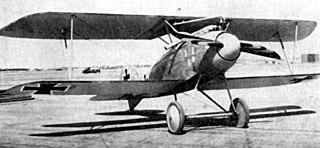 W
WRoyal Prussian Jagdstaffel 4, commonly abbreviated to Jasta 4, was a "hunting group" of the Luftstreitkräfte, the air arm of the Imperial German Army during World War I. The unit would score 192 confirmed victories; in turn, it would suffer 11 killed in action, 9 wounded in action, and two taken prisoner of war. It was one of the units in the famed Flying Circus.
 W
W W
WRoyal Prussian Jagdstaffel 6 was one of the original units of the Luftstreitkräfte, the air arm of the Imperial German Army during World War I.
 W
WRoyal Prussian Jagdstaffel 7 was a "hunting group" of the Luftstreitkräfte, the air arm of the Imperial German Army during World War I. The unit would score 126 aerial victories during the war, at the expense of eleven killed in action, two killed in flying accidents, and twelve wounded in action.
 W
WRoyal Prussian Jagdstaffel 8 was a fighter squadron of the Luftstreitkräfte, the air arm of the Imperial German Army during World War I. Although the Jasta went out of existence along with its parent units shortly after the Armistice ending World War I, its experiences would strongly influence the subsequent Luftwaffe.
 W
WRoyal Prussian Jagdstaffel 9 was a "hunting group" of the Luftstreitkräfte, the air arm of the Imperial German Army during World War I. Although the squadron, and the Luftstreitkräfte, were short-lived, they had great influence on the Nazi Luftwaffe, as can be seen by the later careers of the unit's Staffelführer. It was founded on 28 September 1916, and by the time it disbanded on 15 January 1919, it was credited with 107 aerial victories. In turn, it had suffered thirteen pilots killed in combat, three wounded, five non-combat deaths, and three injuries.
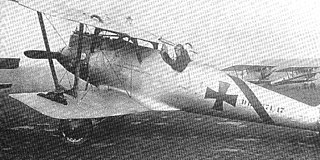 W
WRoyal Prussian Jagdstaffel 10 was a World War I "hunting group" of the Luftstreitkräfte, the air arm of the Imperial German Army during World War I. Jasta 10, in its brief existence, was credited with 118 enemy planes and 33 enemy observation balloons destroyed. In turn, it would lose twenty killed in action, another killed in a flying accident, ten wounded in action, and four held as prisoners of war.
 W
WRoyal Prussian Jagdstaffel 11 was founded on 28 September 1916 from elements of 4 Armee's “Kampfeinsitzer” or KEKs) 1, 2 and 3 and mobilized on 11 October as part of the German Air Service's expansion program, forming permanent specialised fighter squadrons, or "Jastas". It became the most successful fighter squadron in the Luftstreitkräfte.
 W
WRoyal Prussian Jagdstaffel 12 was a World War I "hunting group" of the Luftstreitkräfte, the air arm of the Imperial German Army during World War I. As one of the original German fighter squadrons, the unit would score 155 aerial victories during the war, at the expense of seventeen killed in action, eight wounded in action, and one taken prisoner of war.
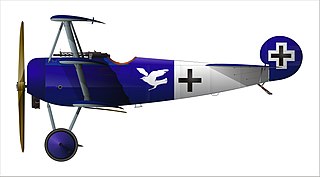 W
WRoyal Prussian Jagdstaffel 15, commonly abbreviated to Jasta 15, was a "hunting group" of the Luftstreitkräfte, the air arm of the Imperial German Army during World War I. The unit would score over 150 aerial victories during the war, at the expense of seven killed in action, two killed in flying accidents, three wounded in action, one injured in a flying accident, and two taken prisoner of war.
 W
WRoyal Bavarian Jagdstaffel 16 was a "hunting group" of the Luftstreitkräfte, the air arm of the Imperial German Army during World War I.
 W
WRoyal Prussian Jagdstaffel 18 was a "hunting squadron" of the Luftstreitkräfte, the air arm of the Imperial German Army during World War I.
 W
WRoyal Prussian Jagdstaffel 19 was a World War I "hunting group" of the Luftstreitkräfte, the air arm of the Imperial German Army during World War I. As one of the original German fighter squadrons, the unit would score 92 verified aerial victories, including ten wins over enemy observation balloons.
 W
WRoyal Saxon Jagdstaffel 22 was a "hunting group" of the Luftstreitkräfte, the air arm of the Imperial German Army during World War I. As one of the original German fighter squadrons, the unit would score 57 verified aerial victories. Their eleven wins over enemy observation balloons made them a balloon buster squadron.
 W
WRoyal Prussian Jagdstaffel 26 was a "hunting group" of the Luftstreitkräfte, the air arm of the Imperial German Army during World War I. As one of the original German fighter squadrons, the unit would score 177 verified aerial victories, including four observation balloons destroyed. The Jasta would pay a bloody price for its success: five pilots killed in action, nine wounded in action, and one prisoner of war.
 W
WRoyal Württemberg Jagdstaffel 28, commonly abbreviated to Jasta 28, was a "hunting group" of the Luftstreitkräfte, the air arm of the Imperial German Army during World War I. As one of the original German fighter squadrons, the unit would score 100 verified aerial victories. The Jasta would pay a blood price for its success: nine pilots killed in action, three wounded in action, one injured in a collision, and one prisoner of war.
 W
WRoyal Prussian Jagdstaffel 29, commonly abbreviated to Jasta 29, was a "hunting group" of the Luftstreitkräfte, the air arm of the Imperial German Army during World War I. The squadron would score 76 aerial victories during the war, at the cost of 13 of their pilots killed in action, two killed in flying accidents, 12 wounded in action, one injured in a flying accident and one taken prisoner.
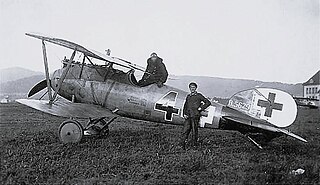 W
WRoyal Prussian Jagdstaffel 31 was a World War I "hunting group" of the Luftstreitkräfte, the air arm of the Imperial German Army during World War I. As one of the original German fighter squadrons, the unit would score 35 verified aerial victories, including five wins over enemy observation balloons.
 W
WRoyal Bavarian Jagdstaffel 32, commonly abbreviated to Jasta 32, was a "hunting group" of the German Luftstreitkräfte, the air arm of the Imperial German Army during World War I. The unit would score 41 aerial victories during the war, including four enemy observation balloons. In turn, they would suffer the expense of eight killed in action, five killed in flying accidents, four wounded in action, two injured in accidents, and one taken prisoner of war.
 W
WRoyal Bavarian Jagdstaffel 34, commonly abbreviated to Jasta 34, was a "hunting group" of the Luftstreitkräfte, the air arm of the Imperial German Army during World War I. The unit would score 89 confirmed aerial victories during the war, including three enemy observation balloons. In turn, they would suffer eleven killed in action, one killed in a flying accident, five wounded in action, one injured in an accident, and five taken prisoner of war.
 W
WRoyal Bavarian Jagdstaffel 35 was a World War I "hunting group" of the Luftstreitkräfte, the air arm of the Imperial German Army during World War I. The unit would score 44 aerial victories during the war, at the expense of six killed in action, four killed in flying accidents, nine wounded in action, five injured in flying accidents, and two taken prisoner of war.
 W
WRoyal Prussian Jagdstaffel 50, commonly abbreviated to Jasta 50, was a "hunting group" of the Luftstreitkräfte, the air arm of the Imperial German Army during World War I. The squadron would score over 45 aerial victories during the war, including 14 observation balloons downed. The unit's victories came at the expense of five killed in action, one wounded in action, and three taken prisoner of war. The squadron was disbanded on 17 January 1919.
 W
WRoyal Prussian Jagdstaffel 55, commonly abbreviated to Jasta 55, was a "hunting group" of the Luftstreitkräfte, the air arm of the Imperial German Army during World War I. The squadron scored at least eight aerial victories during the war. The unit's victories came at the expense of eight killed in action, one killed in a flying accident, and one taken prisoner of war.
 W
WRoyal Prussian Jagdstaffel 59, commonly abbreviated to Jasta 59, was a "hunting group" of the Luftstreitkräfte, the air arm of the Imperial German Army during World War I. The squadron would score over 20 aerial victories during the war. The unit's victories came at the expense of four pilots killed in action and two wounded in action.
 W
WRoyal Prussian Jagdstaffel 65, commonly abbreviated to Jasta 65, was a "hunting group" of the Luftstreitkräfte, the air arm of the Imperial German Army during World War I. The squadron would score 34 aerial victories during the war, including nine observation balloons downed. The unit's victories came at the expense of six pilots killed in action, two wounded in action, and two taken prisoner of war.
 W
WRoyal Prussian Jagdstaffel 66, commonly abbreviated to Jasta 66, was a "hunting group" of the Luftstreitkräfte, the air arm of the Imperial German Army during World War I. The squadron would score over 97 aerial victories during the war, including seven observation balloons downed. The unit's victories came at the expense of five pilots killed in action, one who died in captivity, and two taken prisoner of war.
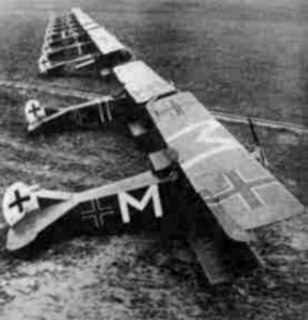 W
WRoyal Saxon Jagdstaffel 72, commonly abbreviated to Jasta 72, was a "hunting group" of the Luftstreitkräfte, the air arm of the Imperial German Army during World War I. The squadron would score over 58 aerial victories during the war, including three observation balloons downed. The unit's victories came at the expense of two killed in action, one wounded in action, and one taken prisoner of war.
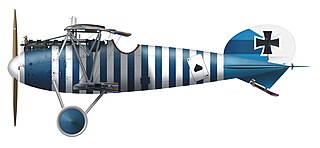 W
WRoyal Bavarian Jagdstaffel 79, commonly abbreviated to Jasta 79, was a "hunting group" of the Luftstreitkräfte, the air arm of the Imperial German Army during World War I. The squadron would score over 28 aerial victories during the war, including three observation balloons downed. The unit's victories came at the expense of four killed in action, three killed in flying accidents, 13 wounded in action, two injured in aviation accidents, and three taken prisoner of war.
 W
WRoyal Prussian Jagdstaffel 81, commonly abbreviated to Jasta 81, was a "hunting group" of the Luftstreitkräfte, the air arm of the Imperial German Army during World War I. The squadron would score six or more aerial victories during July/August 1917, while serving on the Eastern Front. After switching to the Western Front, Jasta 81 would score another 35 victories from May 1918 to war's end. The unit's victories came at the expense of five killed in action, three killed in flying accidents, one injured in a flying accident, three wounded in action, and three taken prisoner of war.